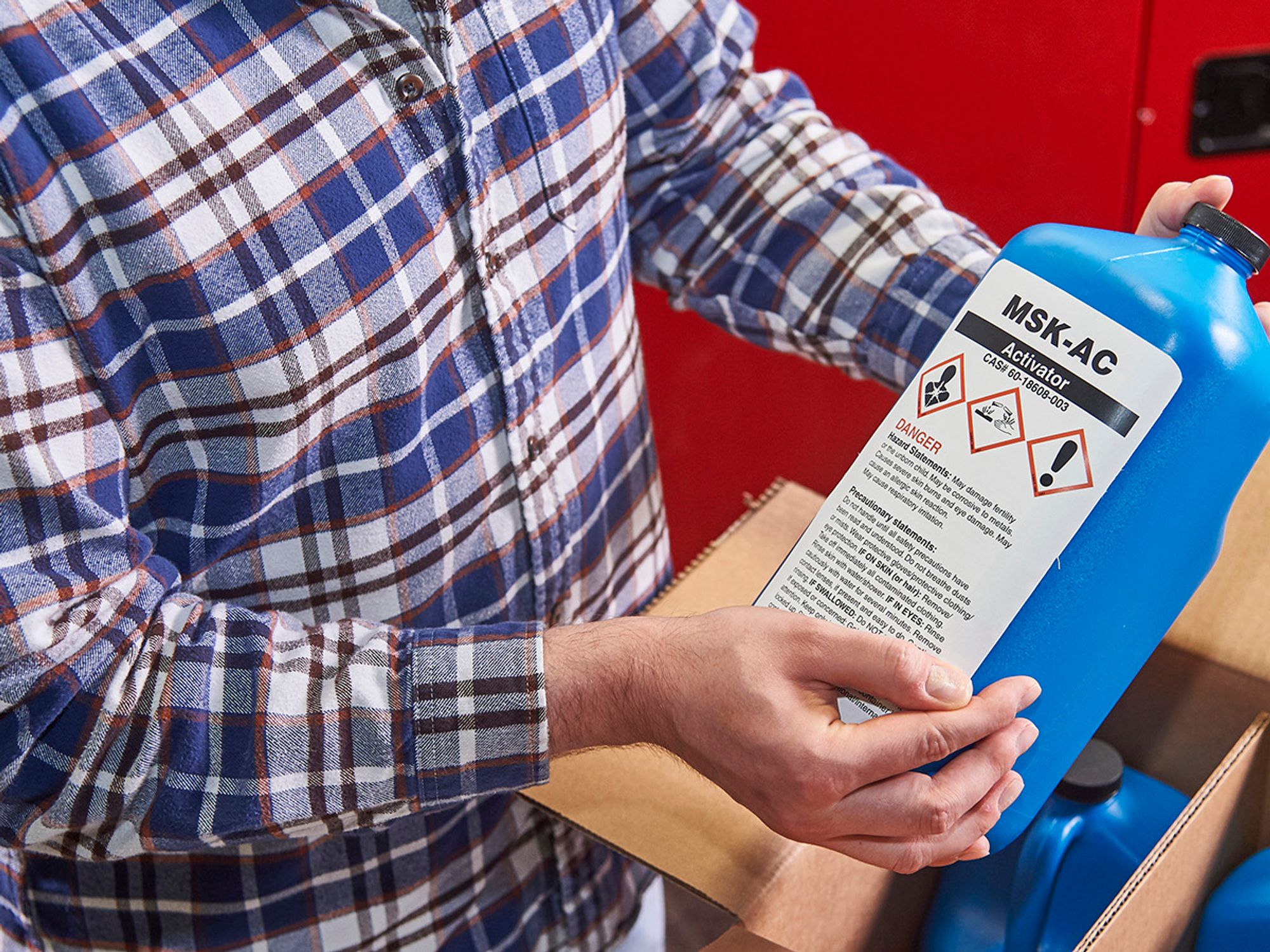Sections 3 and 4

- Section 3 identifies ingredient(s) contained in the product indicated on the SDS.
- Section 4 describes the initial care that should be given by untrained responders to an exposed individual.
Section 3. Composition/Information on ingredients
This section identifies the ingredient(s) contained in the product indicated on the safety data sheet (SDS), including impurities and stabilizing additives. This section includes information on substances, mixtures, and all chemicals where a trade secret is claimed. The required information consists of:
Substances
- Chemical name.
- Common name and synonyms.
- Chemical Abstracts Service (CAS) number and other unique identifiers.
- Impurities and stabilizing additives, which are themselves classified and which contribute to the classification of the chemical.
Mixtures
- Same information required for substances.
- The chemical name and concentration (i.e., exact percentage) of all ingredients which are classified as health hazards and are:
- Present above their cut-off/concentration limits or
- Present a health risk below the cut-off/concentration limits.
- The concentration (exact percentages) of each ingredient must be specified except concentration ranges may be used in the following situations:
- A trade secret claim is made,
- There is batch-to-batch variation, or
- The SDS is used for a group of substantially similar mixtures.
Chemicals where a trade secret is claimed
Where a trade secret is claimed, the SDS must contain a statement that the specific chemical identity and/or exact percentage (concentration) of composition has been withheld as a trade secret. Where a trade secret claim is made for an exact percentage, the chemical manufacturer or importer must provide a concentration range (as found in 1910.1200(i)(1)(iv) - (vi)) to assist downstream users in providing appropriate protections. However, Section 3 must indicate that a trade secret claim is being made and information has been withheld.
Section 4. First-aid measures
This section describes the initial care that should be given by untrained responders to an individual who has been exposed to the chemical. The required information consists of:
- Necessary first-aid instructions by relevant routes of exposure (inhalation, skin and eye contact, and ingestion).
- Description of the most important symptoms or effects, and any symptoms that are acute or delayed.
- Recommendations for immediate medical care and special treatment needed, when necessary.
